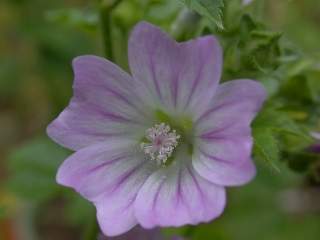 Lavatera cretica L.,
Lavatera cretica L.,back to Tree Mallows
back to Digital Herbarium
more images
The Lavatera Pages
 Lavatera cretica L.,
Lavatera cretica L.,
![]() Cornish Mallow, Smaller Tree Mallow
Cornish Mallow, Smaller Tree Mallow
![]() Cretan Mallow
Cretan Mallow
![]() Cretan Mallow
Cretan Mallow
![]() Cretan Hollyhock
Cretan Hollyhock
![]() Kretische Strauchpappel
Kretische Strauchpappel
![]() lavatére de Crête, mauve de Crête, malvones
lavatére de Crête, mauve de Crête, malvones
![]() malvone di Creta, Malva di Creta
malvone di Creta, Malva di Creta
![]() marva
marva
![]() lavatero rozkolora
lavatero rozkolora
![]() malva, malvones, malvaloca
malva, malvones, malvaloca
![]() malva
malva
![]() malva-bastarda
malva-bastarda
![]() Rikkamalvikki
Rikkamalvikki
![]() falsk rödmalva
falsk rödmalva
![]() Morhocysen Fychan
Morhocysen Fychan
Distribution: L. cretica is found coastal areas of the Near East and Mediterranean region, including North Africa and the Canary Islands, and in Atlantic Europe north to Brittany, the Channel Islands and west Cornwall (including the Scilly Islands). It is found on the major Mediterranean islands including at least the Balearic Islands (Malloca, Menorca, Ibiza, Formentera and Cabrera), Corsica, Sardinia, Sicily, the Maltese archipelago and Crete.
It is also found (naturalised?) in Madeira and the Azores.
In the Near East it is found in Jordan (Dead Sea coasts?) as well as, presumably, along the coast of the Levant.
In the UK it is classified as vulnerable.
It is naturalised in southern and central coastal California, including San Clemente island.4, and in Victoria, on the coast of Western Australia between Shark Bay and Bussleton, and in the region of Auckland in New Zealand.
Habitat: waste places (especially near the sea), walls
Identification: Some forms of L. cretica are very similar to L. mauritanica. It can be separated from this by the shape of the epicalyx segments, which are in the latter are oblong or narrowly ovate and are disposed asymmetrically, as opposed to those of L. cretica which are triangular-ovate and symmetrically disposed. It may also be distinguished by the smoother, glabrous mericarps, with rounded junctures between the dorsal and lateral faces.
The species may also be confused with Malva neglecta, Malva parviflora and Malva sylvestris. Material of M. sylvestris Mauritiana group was in commerce under the name L. cretica.
It may be distinguished from M. sylvestris by the epicalyx segments, which in M. sylvestris are narrowly oblong, compared to the triangular ovate shape of those of L. cretica.
Technical Description
Erect annual or biennial herb, to 40-85-120 cm, initially single-stemmed, later branched, initiation of development of side shoots preceding that of flowers, stellate-tomentose or slightly hispid on all parts other than the corolla. Stems green, suffused red in age, finally becoming a light brown, hispid; foliage alternate, stipulate and long-petiolate; stipules 4 mm, broadly triangular, ascending, pubescent, ciliate; petioles up to 14 cm long, green, and hispid; laminae simple, cordate, suborbicular, 5(-7)-palmately nerved, shortly 5-7-lobed, upper leaves more distinctly lobed, dentate, tomentose on upper and lower surfaces, often with a small red spot at the junction of blade and petiole, to 12 cm wide × 9½ cm long, much smaller on side shoots; inflorescence indeterminate, an initially corymbose leafy raceme; flowers hermaphrodite, protandrous, involucellate, borne upright, singly, in pairs, or in fasciculate clusters in the axils of upper leaves and of leaves of side shoots; pedicels hispid, (much) shorter than the subtending petiole, to 2 cm; bracteoles 3, symmetrically disposed, nearly free, triangular, apex obtuse, tomentose, ciliate, 5 mm long and recurved at anthesis, accrescent to 10 mm in fruit; calyx valvate in aestivation, sepals 5, accrescent and connivent in fruit, connate for about half their length, free portions broadly triangular-ovate, acuminate, lobes ciliate; corolla convolute in aestivation, petals 5, spirally arranged, hypogynous, adnate at the base to the staminal column, emarginate, 15-20 mm long, pale-pink fading to near white in the eye, with a 3 darker parallel veins; staminal column white, about 7 mm long, antheriferous in the upper quarter; anthers white, reniform, unilocular; ovary 7-9-(11)-loculate, locules uniovulate, ovules ascending, placentation axile; style branches filiform, as many as the locules, stigmas introrsely decurrent; fruit schizocarpous, verticillate; mericarps 7-9-(11), glabrous, dorsal faces rounded, slightly transversely ribbed, lateral faces flat, smooth, angles rounded, separating when mature from each other and the fruit axis; seed black, reniform, campylotropous, conformed to the cell, which it completely fills; the testa crustaceous, smooth; embryo incurved into an incomplete ring around the scanty soft or mucilaginous albumen, cotyledons broad and foliaceous, somewhat infolded, radicle centripetal-inferior.
Description
| An erect annual or biennial herb, growing to 2-4ft in height. The vegetative parts have a covering of stellate hairs. The stems are upright, green, and sparsely covered in short, impersistent, hairs. With age they develop a reddish tinge, before turning to a light brown. |
||
| The leaves are borne alternately (one per node), subtended by two stipules. They are simple, sub-orbicular, palmately veined, shallowly and bluntly 5-7 lobed, and toothed, with a cordate base, and are borne on long petioles up to 6" in length. They reach up to 4" in width and 3" in length. Immature and later leaves are smaller more deeply and acutely lobed. Both sides of the leaves bear hairs, the under side being pubescent, and the upper tomentose. There is also a fringe of ciliate hairs. The leaves also have a small purplish-red spot at the junction with the petiole. The petioles have a covering of hairs similar to that of the stems, but more prominent. They develop a reddish tinge where they meet the blade of the leaf.
|
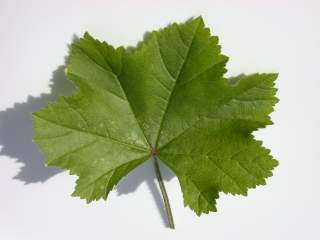
|
|
| The stipules are recurved, triangular, and up to 4mm in length. They have a covering of relatively long (~1mm) hairs. |
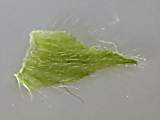 |
|
| The flowers are smallish, about 1-1½" in diameter, and are borne in clusters in the leaf axil, in early summer. The flower consists of an epicalyx of 3 segments, a calyx of 5 sepals, a corolla of 5 petals, an androecium and a gynoecium. |
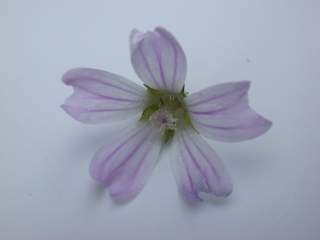 |
|
| The pedicel is about 1cm long, green, with a covering of short hairs. The epicalyx segments are triangular, ciliate and densely pubescent. They are about 5mm long, and free nearly to the base. They are symmetrically disposed. |
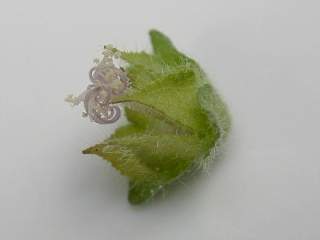 |
|
| The sepals are triangular ovate, ciliate, and densely pubescent. They are about 5mm long. |
||
| The petals are pale lilac fading to near white in the eye, with darker veining. They are about 15-20mm long, and deeply bilobed. |
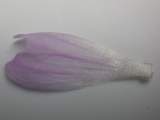 |
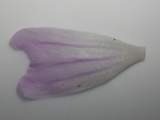 |
| The fruit is a schizocarp, consisting of about 9 mericarps, partially obscured from direct view by the calyx. |
 |
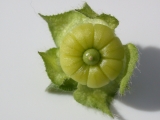 |
| The mericarps are glabrous.The juncture of the lateral and dorsal faces of the mericarps is rounded. The lateral faces are smooth; the dorsal face is slightly ribbed transversely. | 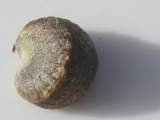 |
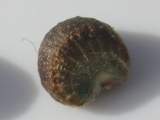 |
| Lavatera cretica has a short tap root. | ||
Cultivation: Seed may be sown indoors, lightly covered, in mid-spring, for planting out later. Germination is easy and rapid. Sowing in the flowering position may also work, but I don't have experience of this.
Pest and Diseases: Lavatera cretica is predated by a number of insects including weevils and aphids. To the best of my knowledge these are not a serious problem, and in my experience more damage is caused by non-specialist leaf-cutter bees.
Lavatera cretica is susceptible to Hollyhock Rust, Puccinia malvacearum.
Lavatera cretica is susceptible to Malva vein clearing potyvirus
Cytology: Lavatera cretica is usually reported as being hexaploid (42 chromosomes) or nearly so (44 chromosomes), but there is an anomalous report of it being 16-ploid (112 chromosomes). The latter could be an error for a member of the Malva verticillata complex, or represent an undescribed cryptic species related to Lavatera cretica.
Variation: The timing of the development of the calyx and epicalyx is variable. Flora Europaea2 describes the calyx as slightly accrescent, and uses this in its key to Lavatera. The Jepson Herbarium4 describes it as strongly accrescent. I have observed the calyx size to be variable even within a single collection, but also that the calyx is moderately to strongly accrescent.
The degree of lobing of the leaves is also variable. In some populations the leaves are weakly 5-lobed, as in L. mauritanica. In others leaves are more strongly lobed. These presumably include some from Morocco ("acutiloba"), France and Spain ("stenophylla"=narrow-leaved, whatever that means in a mallow), Dalmatia ("hederifolia") and central Italy ("triloba").
If INRA6 are correct in placing Malope multiflora in synonymy with L. cretica then this represents a variation in flower colour. The existence of such a variant with white flowers would not be surprising, white variants being known in at least Ll. trimestris, maritima, acerifolia and thuringiaca.
The size of the flowers is variable. The plant described herein has the smallest flowers I have observed for this species; other strains bearing flowers up to approaching twice the size. Flower colour also varies; a population observed in Granada (Spain) has darker, redder, flowers.
Taxonomy:
Lavatera cretica L., Species Plantarum 691 (1753)
Malva linnaei M.F.Ray, Novon, 8(3): 292 (1998),
Lavatera cretica, in common with other species from Lavatera section Anthema, is closely related to Malva section Malva, including Malva sylvestris and the weedy mallows. Martin Forbes Ray5 transfers several of these species, including Lavatera cretica, to Malva. The epithet cretica is preempted by Malva cretica. The epithets stenophylla, silvestris and mauritiana are also preempted. He was unable to obtain access to type material of M. willkommiana to confirm that it represented Lavatera cretica, and hence proposed Malva linnaei, in honour of Karl von Linne (Linnaeus). This would appear to be the correct name for this species, but it has not yet found much use beyond some of the specialist literature.
Synonymy:
References
Bibliography
Photographs
photographs in the Lavatera Gallery.
photograph at Department of Botany, U of Catania
photograph at Belles Fleurs de France
photograph at Biodiversidad Iberobalear y Canaria
back to Tree Mallows
back to Digital Herbarium
more images
The Lavatera Pages
Acknowledgements and Copyright
photographs © 2002 Stewart Robert Hinsley
text and HTML © 2002, 2003, 2004 Stewart Robert Hinsley